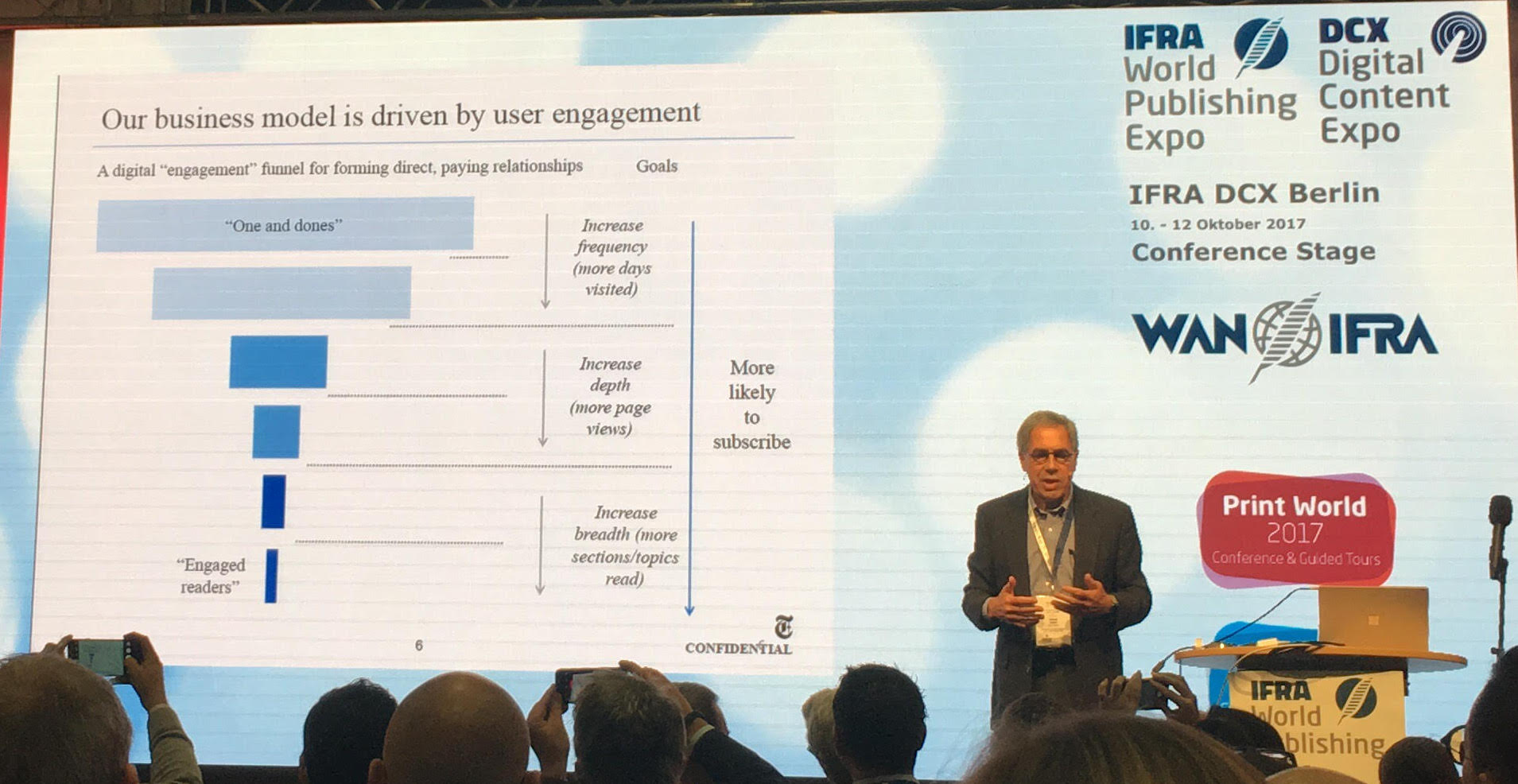Michael Golden on the strategy that has led to success for The New York Times
The New York Times has long been a strong example for other newspapers, whether it’s for their growth in digital subscriptions or the strategy behind their push notifications. This week President of The New York Times Michael Golden pulled back the curtain on how they have been so successful during his standing-room only talk at the World Publishing Expo in Berlin.
Of course, things have not always been so rosy. It was clear that high-quality news could not survive with a continuation of its advertising-first business model.
In 2009, we foresaw the end of our industry.
Michael Golden
Thus a focus on new revenue streams was necessary, with a decision made to focus on subscriptions. The number of people who pay to be subscribers, both in print and digital, is how The New York Times measures their success.
And success it is, with 1 million print subscribers and more than 2 million digital. This rise in subscriptions is even outperforming the ‘Trump bump’ that other American newspapers have seen, with 10,000 net subscriber growth per quarter as what they hope will be their longer term sustainable growth.

So what can explain this success in growing subscribers? One word: mobile. According to Golden, “mobile is the only source of growth.” To encourage this growth, The New York Times is dedicated to meeting the needs of their audience, in every form. This means a wide digital offering, with a website optimised for desktop and tablet, a mobile app, audio offerings (including the increasingly popular “The Daily” with Michael Barbaro), events, and a wide variety of lifestyle services.

This wide offering showcases the goal of The New York Times to focus on user engagement. Golden explained that the aim is to push readers further down the engagement funnel, from “one and done” readers to engaged, subscribed readers. As he explained, every engaged reader first started as an occasional reader.

Still, a great deal of strategic risk does remain. Golden foresees four main risks: the ability to adapt to changes in how journalism is consumed and produced, the ability to expand their relevance, their relationships to the major aggregation platforms, and the advantages possessed by many competitors.

Summary of The New York Times’ Strategy
Brand positioning
The New York Times helps people lead more fulfilling lives by deepening their understanding of the world
- For the 36 million US “curious” + global curious
- With 35-year old in mind
- “The Truth is Hard”
Competitive strategy
Provide journalism worth paying for:
- Stories that “stand apart”: original, multimedia, insightful, trustworthy
- Best news destination in the world
- Essential habit in readers’ daily lives
- Subscription service first
- Creative marketer solutions as compelling as our journalism
Metrics and goals
- $800 million digital revenue
- Grow audience reach
- Drive user frequency, depth and breadth to more than double the number of engaged users
- Reach 5+ million subscriptions
- Grow long-term profitability
This article was written by Mary-Katharine Phillips, Media Innovation Analyst at Twipe from 2017 – 2021.
Other Blog Posts

Stay on top of the game
Join our community of industry leaders. Get insights, best practices, case studies, and access to our events.
"(Required)" indicates required fields

